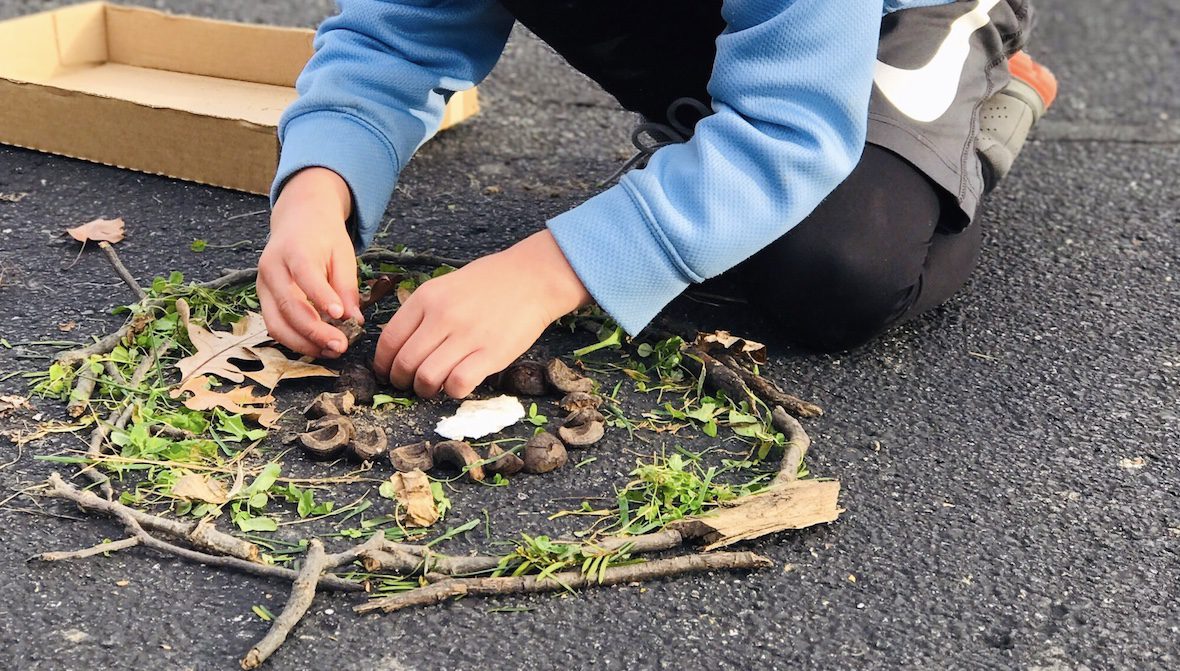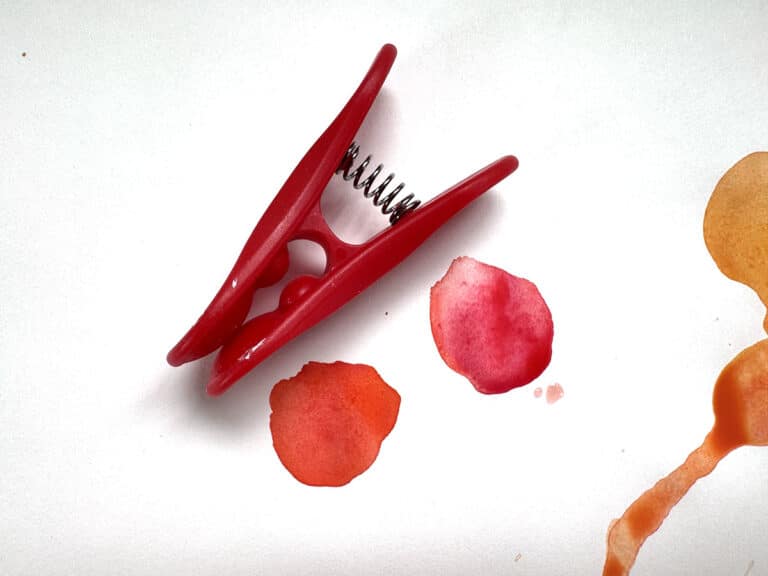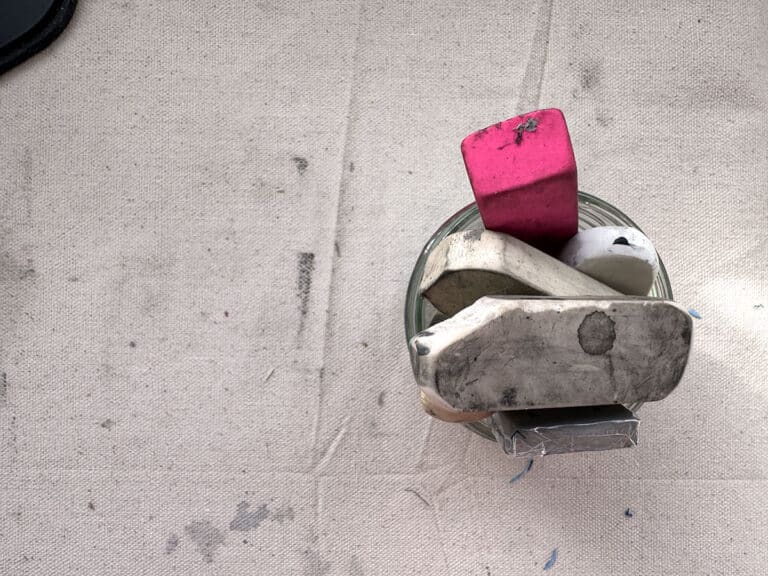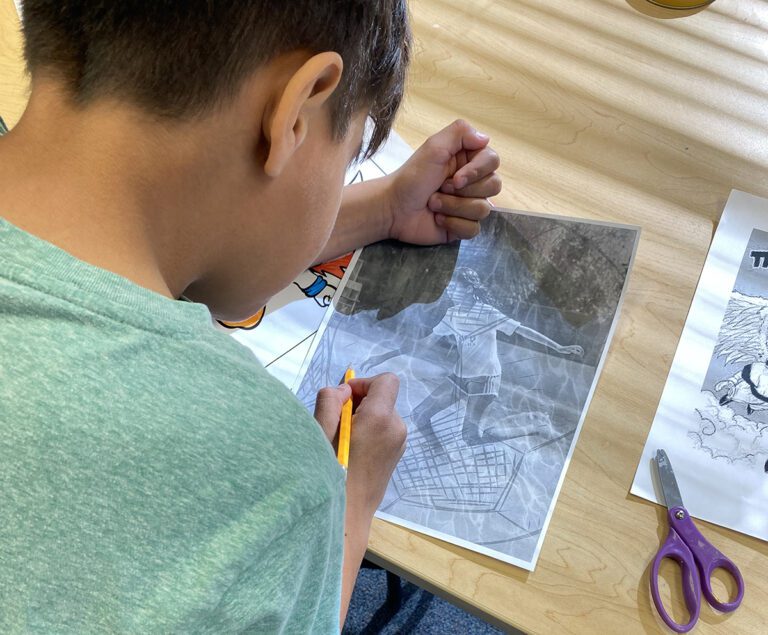Summer is so close, you can smell it! The birds are chirping, the sun is shining, and all you want to do is go outside to soak it all in. At the end of the year it can be hard to stay inside your classroom when you feel the pull to go enjoy the fresh air outside.
How can you enjoy the sunshine and create fun projects with your students?
Here are 5 fun outdoor activities to try near the end of the year.
1. Splatter Paint Roll Paper
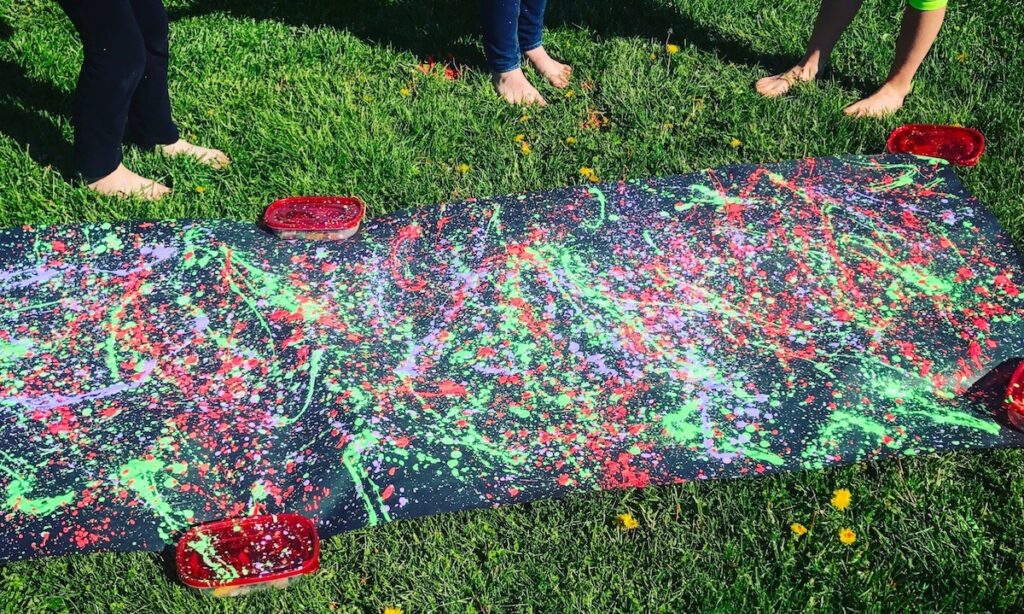
Kick your shoes off into the grass, lay out big sheets of roll paper, and have your students splatter paint like crazy! When you are finished, use the roll paper for next year’s bulletin board displays, backdrops for an art show photo booth, mounting paper for student art, or patterned collage paper.
Follow these simple tips to get the best large-scale splatter paint results.
- Consider how many students you’ll be taking outside to allow enough space for every student. Four to six students per eight-foot piece of roll paper seems to work best.
- Use rocks or weights to hold down the corners of your roll paper. The last thing you want is a freshly painted piece of giant paper floating off into the breeze.
- Portion out your desired paint (tempera works great!) in lots of cups, so each student has something to hold onto while they splatter paint.
- Add a small splash of water to the paint to make the consistency more fluid and easier to splatter. An 85/15 ratio of paint to water works well.
- Have students use teamwork to carry the roll paper inside and lay on a flat surface to dry.
2. Andy Goldsworthy Outdoor Art
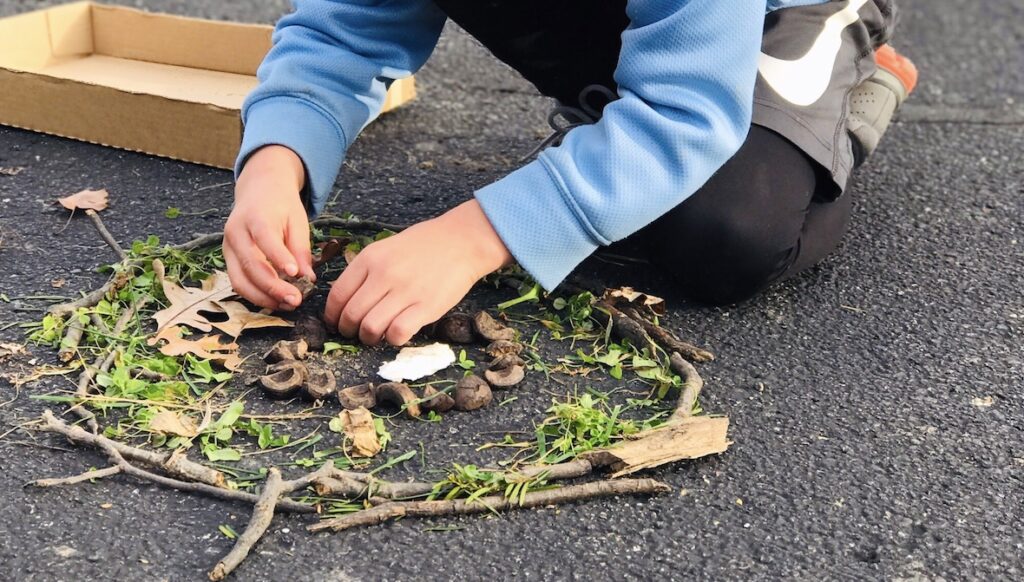
This activity is a perfect no-prep activity for your students to create collaborative nature art right outside their school doors. Discuss with your students how the world around them can be some of the greatest inspiration. Andy Goldsworthy is the perfect artist because of his dramatic natural designs built exclusively from nature.
Try these simple tips to create successful Andy Goldsworthy inspired art.
- Check out this quick video of a few of Andy Goldsworthy’s creations.
- Show your students a few images of Andy Goldsworthy’s striking art installations.
- Encourage students to collect and group natural materials for a more eye-catching creation.
- Create somewhere on school grounds where the installation can remain and deteriorate naturally. Your students will love to see how it changes as time passes.
- Group students together in groups of three or four to encourage collaborative idea sharing.
3. Bubble Drawings

This engaging drawing project involves observing and playing with bubbles. You really can’t go wrong! Your students will have a blast blowing and popping bubbles with this simple outdoor activity.
Here are a few helpful suggestions when creating bubble art with your students.
- First, play this mesmerizing bubble video to grab their attention.
- Use circle tracers to lay out overlapping bubble designs.
- Have students experiment with materials like Art Stix, soft pastels, or colored pencils to see which effect they like best.
- Elect a few students to be “bubble masters” and allow them to respectfully blow bubbles while students are working.
4. Texture Rubbings
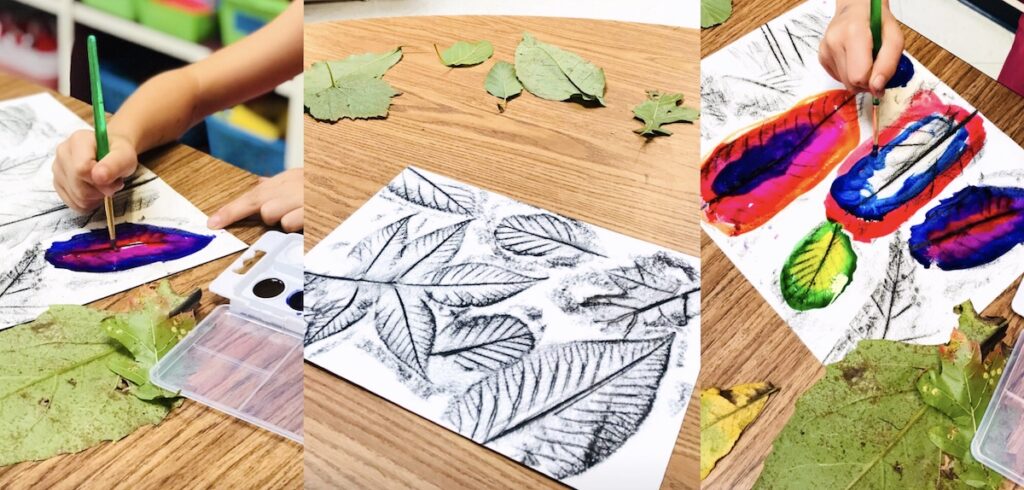
Creating texture rubbings outside is the perfect way to search for natural texture. You can create a piece of art using an outdoor area of your school as the focus, such as the playground, or you can search for objects like leaves and natural materials to use as the subject matter.
Check out these tips for creating texture rubbings outside.
- If students are searching for smaller items, like leaves, use a flat drawing board or clip board as a sturdy base. Clip or tape one edge of the paper down, then slide the items underneath.
- Take the paper wrapping off oversized crayons to give students a larger texture rubbing tool to hold onto.
- Consider creating your own multi-colored crayons by melting old crayons in silicone ice cube trays. These make perfect tools for texture rubbings!
5. Art Games
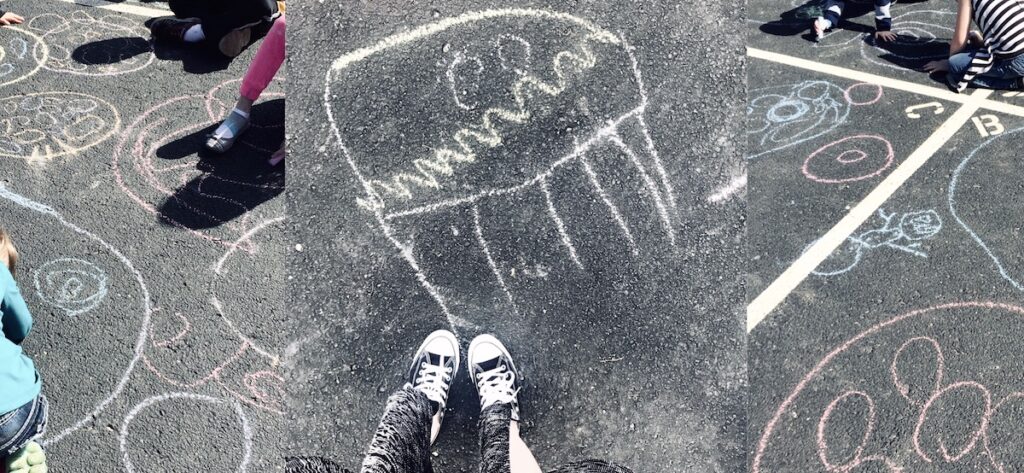
Depending on the length of your classes, you may want to take your class out for the entire period or for a quick outdoor game at the end. Think of a concept you are working on, and challenge yourself to find, or invent, an active game to do to practice the concept.
Here are a few engaging activities that will get your students moving.
- “Invent a Drawing” Sidewalk Chalk Game
Draw simple abstract shapes randomly on the blacktop using sidewalk chalk. You can also choose a few students to help do this task or have them work with partners. Challenge students to observe the simple abstract shape and make additions with chalk to invent an image or story. You’ll get a kick out of what they invent. - “Foreground, Middleground, Background” Race Game
Using this game while learning about the components of a landscape composition can be a fun way to let students burn off their extra energy. It’s the easiest game ever. Take your students outside and observe your surroundings. Identify the foreground, middleground and background areas of where you are standing. Then, point to each student and shout “foreground,” “middleground,” or “background,” and watch as they run to the areas discussed. - “Stink Bug” Tag Game
There is no rule against making up games, no matter how ridiculous. Using the simple concept of freeze tag, you can create a version of tag for just about any lesson in your art room. For example, when we were creating patterned stink bugs (after tracing our smelly feet), we played “stink bug” tag outside. We elected a few “bugs” who would tag kids. Then, other friends could “un-stick” their classmates by crawling like a bug around the frozen kids. You could also “save” kids from being frozen by having them recite a vocabulary definition, compliment their friend, or draw something in the air. The possibilities are endless!
Hopefully, these outdoor activities can help you survive to the end of your year with a smile on your face. Your kids will love getting outside the classroom and so will you!
What are some outdoor activities you have tried with your students?
What are your favorite materials to use outside?
Magazine articles and podcasts are opinions of professional education contributors and do not necessarily represent the position of the Art of Education University (AOEU) or its academic offerings. Contributors use terms in the way they are most often talked about in the scope of their educational experiences.
